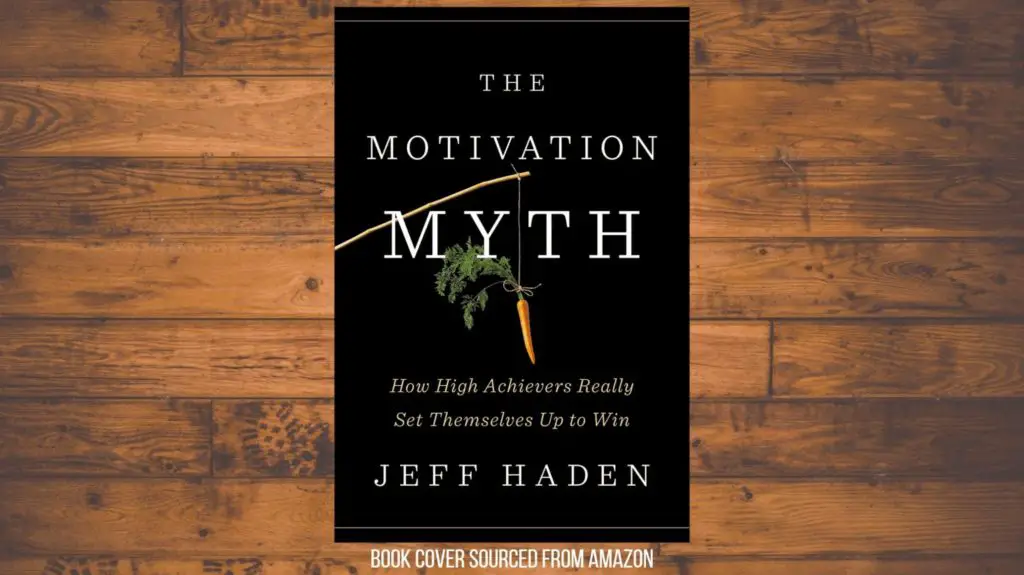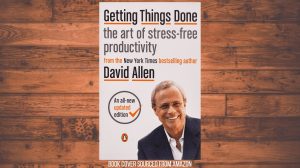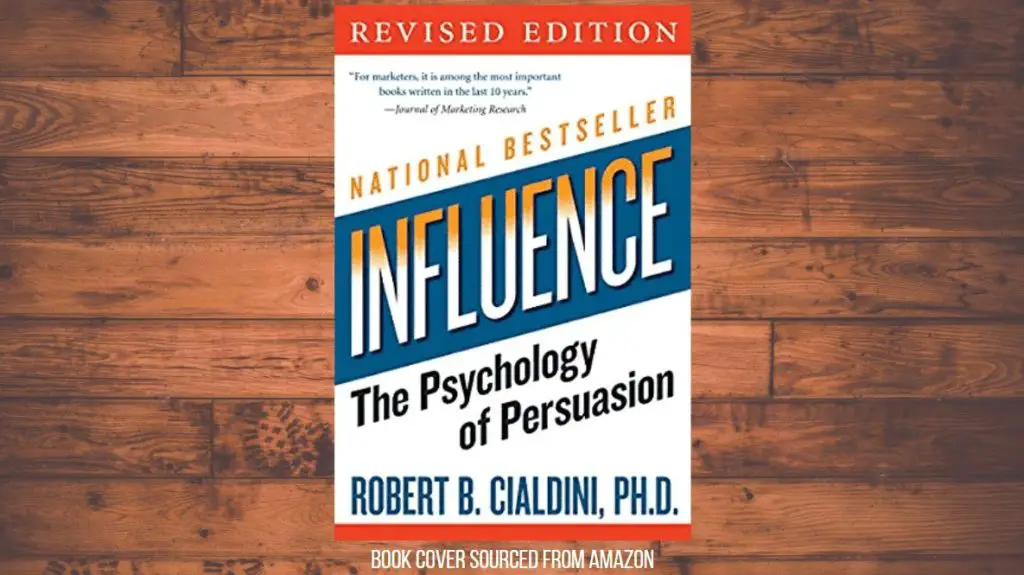This post may contain affiliate links, which means I’ll receive a commission if you purchase through my links, at no extra cost to you. Please read full disclosure for more information.
About
- Title: The Motivation Myth
- Sub-title: How High Achievers Really Set Themselves Up to Win
- Author: Jeff Haden
- About the author: Jeff Haden is an accomplished writer with dozens of books under his belt. He is a LinkedIn influencer and has contributed to Inc. Magazine as an editor. Jeff seeks out speaking with incredibly successful individuals to find out why they are so successful.
- Pages: 288
- Published: 2018
- Link to book
High-Level Summary
The Motivation Myth is a fantastic book that breaks down motivation and success. Author Jeff Haden highlights those times where we feel like we’re hit with a lightning bolt of inspiration as well as those times where we don’t feel like doing anything.
Like most of us, he thought that motivation was a prerequisite to taking on an effortful task. He thought he needed a spark before beginning the work. In fact, it is the opposite. The work itself helps ignite motivation. Motivation is a result.
With this in mind, the way to gain motivation is to succeed; and this does not mean a drastic success. You should break a goal down into its smallest steps and components. Cross off each step along the journey and feel the success of doing so. The small dopamine hit you’ll get will fuel your motivation.
Aside from going into how motivation isn’t some secret sauce, the book goes into many other topics as well:
- Motivation not being a spark
- Focus and chances of success
- Goals choosing your process
- Happiness and serial achievers
- Gaining more willpower by needing less of it
- Working smarter instead of harder
- Advice for choosing a coach/mentor
You’ll learn how successful individuals create processes and focus on those processes rather than fixating on their goals. They fall in love with the process, which inevitably leads them to their original goal.
Recommendation
I recommend this book to all readers trying to improve themselves in any way. On the path to improvement, you know there are times where you are motivated and times you are not. If you struggle with maintaining motivation, this book is for you.
The Motivation Myth will open your eyes to how motivation actually comes about and how you can generate it for yourself.
Top 22 Takeaways
* In no particular order
1. I thought motivation was a prerequisite to starting a tedious learning process—a spark necessary to get me going. But motivation is really a result. Motivation is the fire that starts burning after you manually, painfully, coax it into existence, and it feeds on the satisfaction of seeing yourself make progress.
2. Humble beginnings can create the perfect foundation for success, because starting at the bottom creates almost endless opportunities to enjoy small successes.
3. There is only one recipe for gaining motivation: success. Specifically, the dopamine hits we get when we observe ourselves making progress. Not huge, life-changing successes. Those come all too infrequently, if ever. If you want to stay motivated, if you want to stay on track, if you want to keep making progress toward the things you hope to achieve, the key is to enjoy small, seemingly minor successes—but on a regular basis.
4. Accomplishing something, no matter how small the task, makes us feel better about ourselves. That’s why to-do lists are so popular. Incredibly successful people set a goal and then focus all their attention on the process necessary to achieve that goal.
5. Motivation and confidence gained in one aspect of your life can spill over into other aspects of your life. When you feel good about yourself in one way—when you achieve some degree of success in one aspect of your life—you tend to feel better about other parts of your life as well.
6. Talking to your friends and family about your goals can sometimes be a big mistake. Research shows that people who talk about their intentions are much less likely to follow through on those intentions. You already got a huge kick out of people thinking of you as a trail hiker (example) . . . so now you’re less motivated to actually be a trail hiker.
7. Success → Motivation → More Success → More Motivation → More Success = Becoming
8. When you create a routine, embrace that routine, and see the results of that routine, you stop negotiating with yourself. Your routine isn’t something you choose to do; it’s just what you do. And you stop making choices that don’t support your goals.
9. To reach a goal, do not focus on the goal. The key is to set a goal, use it as a target that helps you create a plan for achieving it . . . and then do your best to forget all about that goal. The people who actually achieve their goals create routines. They build systems. They consistently take the steps that, in time, will ensure they reach their ultimate goal. They don’t wish. They don’t hope. They just do what their plan says, consistently and without fail.
10. Studies show that twenty minutes of exercise improves your mood for up to twelve hours. Research also shows that exercise boosts energy; why not take advantage of a natural energy surge when you probably need it the most?
11. Keep a journal to monitor your habits (eating, financial, procrastination). The Hawthorne effect works: When we know we are being observed, we instinctively change our behaviors. If you have to write down what you are doing, you may change your behavior so you only have positive things to write down.
12. The average person will need to put in about forty hours a week for five years to become highly accomplished in their chosen pursuit. It’s incredibly difficult to perform at an extremely high level in very different—and sometimes conflicting—pursuits. Get to the 90 or 95 percent level in any pursuit and you will be extremely successful and will feel incredibly good about yourself.
13. Generalists trump specialists in today’s professional landscape. Change occurs quickly. Skills that are valued today are obsolete tomorrow.
14. The best goals eliminate the pain of regret. As we talked about before, some of the worst words you can say are “If I had only.” A quote often attributed to Jim Rohn goes, “There are two types of pain you will go through in life: the pain of discipline and the pain of regret. Discipline weighs ounces while regret weighs tons.”
15. 6 Steps to Having Willpower: 1) Eliminate as many choices as possible. 2) Make decisions tonight so you won’t need to make them tomorrow. 3) Do the hardest things you need to do first. 4) Refuel often. 5) Create reminders of your long-term goals. 6) Remove temptation altogether.
16. “Discomfort is growth,” Tyler says. “To constantly improve, and to be more resilient and adaptable, whenever there is a fork in the road, choose discomfort over comfort and you will grow.
17. The most effective people apply the same framework to the decisions they make. “Will this help me reach my goal? If not, I won’t do it.” And that means you don’t need to rely on willpower or motivation, because you made the choice before the choice was ever presented to you.
18. Working your number is based on consistently doing, over and over and over again, the things that make the biggest difference in your life. When you put in the work, your rate of return on your number steadily increases. Putting in the repetitions, while trying to increase the quality of every repetition, is fundamental to steady and lasting improvement.
19. Your biggest limits are self-imposed—but those limits are the easiest to overcome. Whether it’s a speaker, a musician, a performer, an athlete, or an entrepreneur, find a way to expose yourself to exceptional skill, exceptional expertise, and exceptional talent. When you spend time with a superstar, when you try to do what the pros do, that experience will automatically ratchet your own internal limits to a higher level.
20. The key is to find ways to delegate or streamline all the tasks that distract you from doing what you do best, because when you do more of what you do best, you achieve more—and your career or your business or your personal life naturally flourishes.
21. It’s very hard to make massive gains in skill and performance and talent, especially overnight. But it is pretty easy to make tiny changes through a strategy termed “aggregate marginal gains.” The “1 percent advantage” works incredibly well for one simple reason: Small improvements add up to a major overall improvement. Ever so slightly streamline your morning routine, the way you handle e-mail, the way you handle voice mail, the way you schedule appointments . . . and soon you can free up thirty minutes of your day so you can (you guessed it) do more of what you do best.
22. Symbols of success are often a mask. The playing field is always more level than it seems. If you have doubts or fears, you’re not alone. Everyone else has, or had, the same fears. If you’re feeling low, put your head down and focus on your process. You’ll improve—and you’ll gain the motivation you feel you lack. Don’t wait for motivation. Get started. Work your plan.
What I Liked

Covers many topics other than the myth of motivation
When I first read the title of this book, I thought the whole book would revolve around the myth of motivation.
The author covers many more topics than that, which provides more value to the reader. You’ll learn about habits, structure, grit, and steps to take for goals revolving around productivity, willpower, mentorship, weight loss, and starting a business.
Gives actionable steps for the reader to take
As I just mentioned, the book gives actionable steps for a number of things. I enjoy when books do this because it lays out clear steps the reader can follow to begin improving their life.
There is no guessing. They are laying out the roadmap for you.
Writing style and structure make it easy to follow and consume
Jeff Haden wrote and structured this book in a way that makes it easy to follow and easy to digest the information. Some of the other books I have reviewed, such as Beyond Order (Jordan Peterson) and The 48 Laws of Power (Robert Greene) are dense and take concentration.
The Motivation Myth is easy to march through, but still just as valuable.
Benefits To Your Life and Career

Realize that motivation is a result, not a prerequisite
For all of us hustlers out there, we can relate to moments where we feel unstoppable and the moments where we don’t feel like doing anything. You may think that you need motivation first in order to go conquer.
The Motivation Myth will reveal to you that motivation is a result, not a prerequisite. Taking action and accruing small wins will ignite motivation. This can enable you to hit the switch on motivation whenever you need it.
Equipped with tools to get out of a rut
Jeff Haden equips you with the tools to get out of a rut. First, he shows you the source of motivation. Then he talks about the benefits of routine. With this in mind, you can dig yourself out of any rut you may be in.
Instead of staying stagnant and waiting for inspiration to come, you can use the tools in this book to get yourself moving forward.
Helps enable structure, growth, and development
All of the tips and lessons in The Motivation Myth will enable structure, growth, and development; for your life, for your career, and even for your hobbies.
15 Actions You Should Take
1. To get motivated, take small steps forward. Observe yourself making progress and celebrate the small wins. The dopamine hit you get from the small wins will motivate you. Improving feels good. Improving creates a feeling of competence, and competence breeds self-confidence.
2. Don’t tell people about your dreams and goals. The act of doing this—and seeing the reactions from others—will give you a premature sense of possessing what you talk about. In short, you’ll believe you have already achieved your dreams and goals just by talking about it.
3. Practice delaying gratification and withstanding temptation whenever you can. This is a trait of successful individuals.
4. Don’t fall in love with your goal. Fall in love with the process. Falling in love with the process will lead to your end goal. Use your goal as a target to aim at.
5. Reduce the number of decisions you have to make in a day. Too many choices depletes our willpower. A solid routine and prioritization can help with this.
6. Break down large, overwhelming tasks into smaller parts.
7. To get people to like you, avoid doing what dislikable people do. Don’t talk a lot. Don’t blame. Don’t try to impress. Don’t interrupt. Don’t control. Don’t preach. Don’t dwell on the past.
8. Follow these steps for creating a successful process: 1) Set your goal. 2) Set aside decision anxiety and choose a reasonably promising routine. 3) If necessary, customize your process to be extremely specific. 4) Rework your schedule. 5) Map out your daily plan. 6) Work the process. 7) Fix your schedule problems. 8) Your results may vary, so adapt accordingly.
9. Take care of your most basic needs according to Maslow’s hierarchy. It’s impossible to feel fulfilled and happy if you aren’t taking care of your basic needs.
10. Stop doing these things in order to have the most productive mindset: 1) Stop making excuses for doing less. 2) Stop letting disapproval, or even scorn, stand in your way. 3) Stop letting fear hold you back. 4) Stop waiting for inspiration. 5) Stop turning down the help you need. 6) Stop stopping.
11. Successful people are successful because they do things differently from other people. The extra mile is a lonely place, but that’s also why the extra mile is a place filled with opportunities.
12. Here are some things to follow for the philosophy of willpower: 1) Let Your Past Inform Your Future—but Don’t Let It Define Your Future. 2) See Your Life—and Future—as Within Your Control. 3) Learn to Ignore the Things You Have No Control Over. 4) Don’t Just Aim for Tenacity; Aim for Adaptability. 5) Don’t Resent; Celebrate the Success of Others. 6) Resist the Temptation to Complain, Criticize, or Whine. 6) Count Your Blessings.
13. Ask yourself, “Will this help me reach my goal?” If not, don’t do it.
14. Identify the things that make the biggest positive difference in your life. Do those things over and over again. As long as you stick to this every day, success is essentially guaranteed.
15. Do what the pros do: Find a person who challenges you. Find a person who lays out a process so seemingly daunting, so seemingly insurmountable, a course wherein the there seems insurmountable but so does the here . . . and who helps you achieve something you never dreamed you could.
Resources
The Motivation Myth can be found on Amazon at this link here if you are interested in reading.
About Post Author
Brandon Hill
I’m Brandon Hill with Bizness Professionals. We serve content to help young professionals develop personally, professionally, and financially. Well-rounded improvement is a theme we live by. As such, this website will cover a variety of topics aimed to help you have a successful life and career.
Brandon Hill
I'm Brandon Hill with Bizness Professionals. We serve content to help young professionals develop personally, professionally, and financially. Well-rounded improvement is a theme we live by. As such, this website will cover a variety of topics aimed to help you have a successful life and career.



